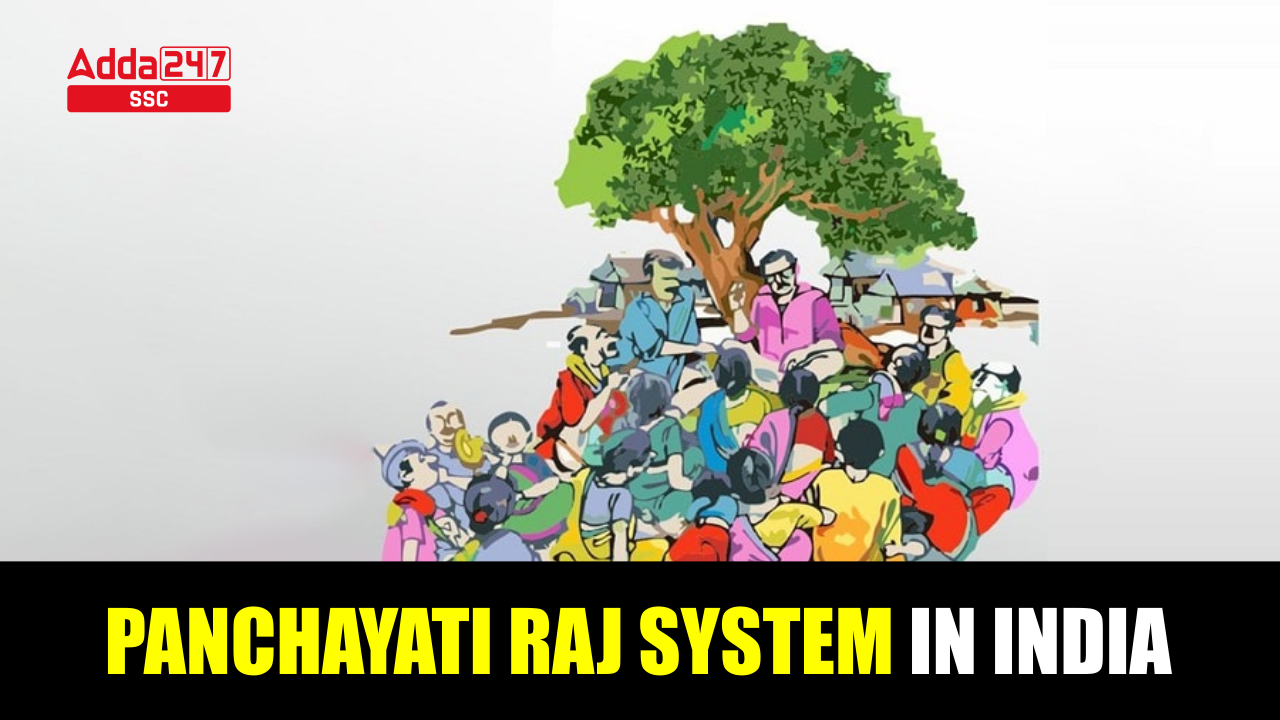Panchayati Raj Institutions (PRIs) are the system of local self-government in rural India. They are the third tier of the government, after the central and state governments. The idea behind Panchayati Raj Institutions is to bring decision-making and governance closer to the people living in rural areas. This helps ensure that local communities can directly participate in the development and decision-making processes that affect them.
The basic unit of the Panchayati Raj system is the Panchayat. The word “Panchayat” comes from the Sanskrit words “Pancha” (meaning five) and “Ayat” (meaning assembly). Traditionally, a Panchayat was a council of five elders chosen by the community to resolve local issues and manage community affairs. Today, the Panchayat system has evolved into a structured and organized framework across India. It aims to promote decentralization and allow people in rural areas to have a greater say in their own development and governance. Overall, PRIs and the Panchayat system are crucial for empowering rural communities and making local governance more effective and accountable to the people.
Structure of The Panchayati Raj System
The Constitution of India has specific provisions for Panchayati Raj Institutions (PRIs) – the system of local self-government in rural areas. These provisions were added through the 73rd Constitutional Amendment Act in 1992. Part IX of the Indian Constitution (Articles 243 to 243-O) deals with the Panchayats. It provides the framework for the structure and functioning of Panchayati Raj Institutions across the country.
- Gram Panchayat: The Gram Panchayat is the basic unit of the Panchayati Raj system, functioning at the village level. It is headed by a Sarpanch who is elected by the members of the Gram Panchayat.
- Block Panchayat or Panchayat Samiti: Above the Gram Panchayat is the Panchayat Samiti, which operates at the block level. It consists of elected representatives from the Gram Panchayats within the block, along with the Sarpanches of those Gram Panchayats.
- Zila Parishad: The Zila Parishad is the top-level body at the district level. Its composition comprises representatives elected from the Panchayat Samitis operating within the district, along with Members of Parliament (MPs) and Members of the Legislative Assembly (MLAs) representing the district.
However, as per the provisions of the Panchayati Raj Act 1993, a State having a population less than 20 lakh may not constitute Panchayats at the intermediate level means at Block Level.
Features of the Panchayati Raj System
- All voters who are listed on the electoral records and are residents of a village are included in the Panchayat at the village level constituting the Gram Sabha. The Panchayati Raj system’s smallest and only permanent unit is the Gram Sabha. According to the relevant statute, the state legislature establishes the Gram Sabha’s authority and duties.
- Scheduled Castes (SCs) and Scheduled Tribes (STs) have seats designated for them as Panchayat chairpersons as well as at all levels in proportion to their numbers.
- One-third of the total number of seats are to be reserved for women. One-third of the seats reserved for SCs and STs are also reserved for women. This rule also applies to the chairperson’s position at all levels (Article 243D). The Panchayat’s reserved seats may be assigned to different constituencies by rotation.
- There is a consistent policy, with each term lasting five years. Before the term expires, new elections must be held. Elections must be held within six months of dissolution (Article 243E).
- Panchayats are responsible for developing plans for economic development and social justice in accordance with the law, which also extends to the various levels of Panchayat, including the subjects listed in the Eleventh Schedule (Article 243G).
Panchayati Raj Day
The Panchayati Raj Day, observed annually on April 24 by the Ministry of Panchayati Raj, honors the Constitution’s 73rd Amendment Act of 1992, which went into effect in 1993. This day honors democratic decentralization and local self-governance at the national level.
Panchayati Raj Schedule & Articles
The Panchayati Raj Act adds the Eleventh Schedule, which contains the 29 functional items of the panchayats, as well as Part IX, “The Panchayats,” to the Constitution. Panchayati Raj articles can be seen from Article 243 to Article 243O included in Part IX of the Constitution. Article 40 of the Constitution directs the state to organize the village panchayats and give them powers and authority so that they can operate as self-government. The Amendment Act gives this directive a physical form.
Salient Features of the Panchayati Raj Act
- Three-tier system: establishment of the three-tier system of Panchayati Raj in the states at the village, intermediate, and district levels.
- Election of members and chairperson: The members of all levels of the Panchayati Raj are elected directly. The chairpersons at the intermediate and the district level are elected indirectly by the elected members and at the village level, the Chairperson is elected as determined by the state government. The minimum age for contesting elections to the Panchayati Raj is 21 years.
- Reservation of seats
- SC and ST: Reserved at all three levels based on their population percentage.
- Women: A minimum of one-third of seats and chairperson positions at all levels are reserved for women.
- Backward Classes: State legislatures have the authority to decide reservations for backward classes in any panchayat level or chairperson’s office.
- Duration of Panchayat: The Act provides for a five-year term of office to all the levels of the panchayat.
- State election commission: It is set up in each State to conduct elections to Panchayati Raj institutions.
- Powers and Functions: The state legislature may endow the Panchayats with such powers and authority as may be necessary to enable them to function as institutions of self-government.
- Finance Commission: The state finance commission is set up in each State after every five years. It reviews the financial position of the panchayats and provides recommendations.
Panchayati Raj in India
The Panchayati Raj in India was first launched on October 2, 1959, in Rajasthan, by then-Prime Minister Pt. Jawaharlal Nehru. The second state to implement the Panchayati Raj system in India was Andhra Pradesh. Most of the conditions established this Panchayati Raj system in their states. However, there were wide-ranging differences between them. Some states chose a two-tier structure, while others used a three or four-tier system. Additionally, there were regional variations in the way that power was transferred.
To make sure things worked well, the Indian government made committees. The first one was the Balwant Rai Mehta Committee in 1957, which suggested the idea of ‘democratic decentralization,’ later known as Panchayati Raj. Other important committees like Ashok Mehta (1977), Hanumantha Rao (1983), G.V.K. Rao (1985), L.M. Singhvi (1986), and P.K. Thungan (1989) helped shape and recommend ideas for Panchayati Raj in India.
Panchayati Raj System in India: Functions
The key functions of the Panchayati Raj System in India are as follows:
- Spreading Awareness: Panchayati Raj is responsible for spreading awareness and educating people about various issue, their rights, government schemes, and more.
- Local Governance: The primary objective of the Panchayati Raj system is to facilitate local self-governance at various levels, including villages, intermediate (block), and districts. It empowers villagers by involving them in decision-making processes and allowing them to assume responsibility for managing local affairs.
- Dispute Resolution: Panchayati Raj is responsible for sorting disputes at a local level. They handle matters related to land disputes, property rights, village-level conflicts, and other civil disputes.
- Planning and Development: The Panchayat is responsible to formulate and implement plans that promote development at a local level. This includes agricultural development, rural industrial development, infrastructure development, and more.
| Check related posts here: | |
| Largest State in India | National Symbols of India |
| Dams in India | Union Territories in India |




 Free Study Material for SSC CGL 2025, Do...
Free Study Material for SSC CGL 2025, Do...
 Reasoning Topics Asked in SSC CGL Exam L...
Reasoning Topics Asked in SSC CGL Exam L...
 Top 10 Longest Rivers in India, Largest ...
Top 10 Longest Rivers in India, Largest ...









